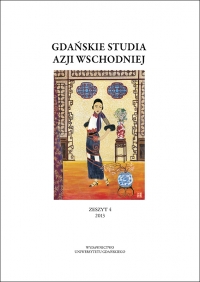Proces przed Międzynarodowym Trybunałem Wojskowym dla Dalekiego Wschodu i jego miejsce w świadomości historycznej Japończyków
The Trial Before the International Military Tribunal for the Far East and Its Place in the Historical Consciousness of the Japanese
Author(s): Dominika Świętońska, Karol KarskiSubject(s): Cultural Essay, Political Essay, Societal Essay
Published by: Wydawnictwo Uniwersytetu Jagiellońskiego
Summary/Abstract: Judgments passed by the Nuremberg Tribunal (1946) and the Tokyo Tribunal (1948) are the main symbols of calling the perpetrators to account for starting World War II and for the atrocities committed during that war. Both trials were groundbreaking events for the world at the time. For the first time individuals were brought before international courts to be held responsible for violations of international law. Moreover, they were not low-ranking defendants, but people who had had a real and personal impact on the actions of their states. Until that moment individuals as a rule had been in no relation whatsoever to international law. States established obligations for themselves and resolved various issues among themselves. If they wanted to charge natural persons for violations of its provisions, they did so before domestic courts and under domestic law. International criminal law ceased to be a trumpeted but never implemented postulate of jurists and „peace loving” politicians, who often only paid lip service to the cause. It became reality. However, people tried before the Tokyo Tribunal were not condemned by Japanese society. Sentenced to prison, they could, after serving their sentences, again become constitutional members of the Japanese government, as was the case of Shigemitsu Mamoru, who, four years after his early release, regained the office of Minister of Foreign Affairs. In addition, he became Deputy Prime Minister. This happened despite the fact that he had been convicted by the Tokyo Tribunal of crimes against peace and of war crimes. Significantly, in 1956 he represented Japan at the 11th session of the UN General Assembly, during which the country was admitted to the UN. Kaya Okinori, Minister of Finance in 1941–1944, eight years after being released from prison in which, according to the Tokyo Tribunal’s sentence, he was to have spent the rest of his life for committing crimes against peace, again became a cabinet member, this time as Minister of Justice (sic!). Others, who were sentenced to death, died in custody during the trial or in prison while serving their sentences, became divine spirits kami venerated in Tokyo’s Yasukuni Shrine. After all, as the Japanese believed, they died serving Japan at the hands of foreigners, „sacrificed on the altar of peace”. The divine spirit of another convict, who died immediately after his release from prison, was also thought worthy of being placed in the Yasukuni Shrine. Those who were not released on health grounds left the Sugamo prison – having been pardoned – in the mid-1950s at the latest. Members of the armed forces had the time spent in prison counted towards their pension. All convicted by the Tokyo Tribunal are seen by Japanese society not as criminals but as victims of the occupying powers; some even regard them as heroes.
Journal: Gdańskie Studia Azji Wschodniej
- Issue Year: 2013
- Issue No: 04
- Page Range: 7-49
- Page Count: 43
- Language: Polish

